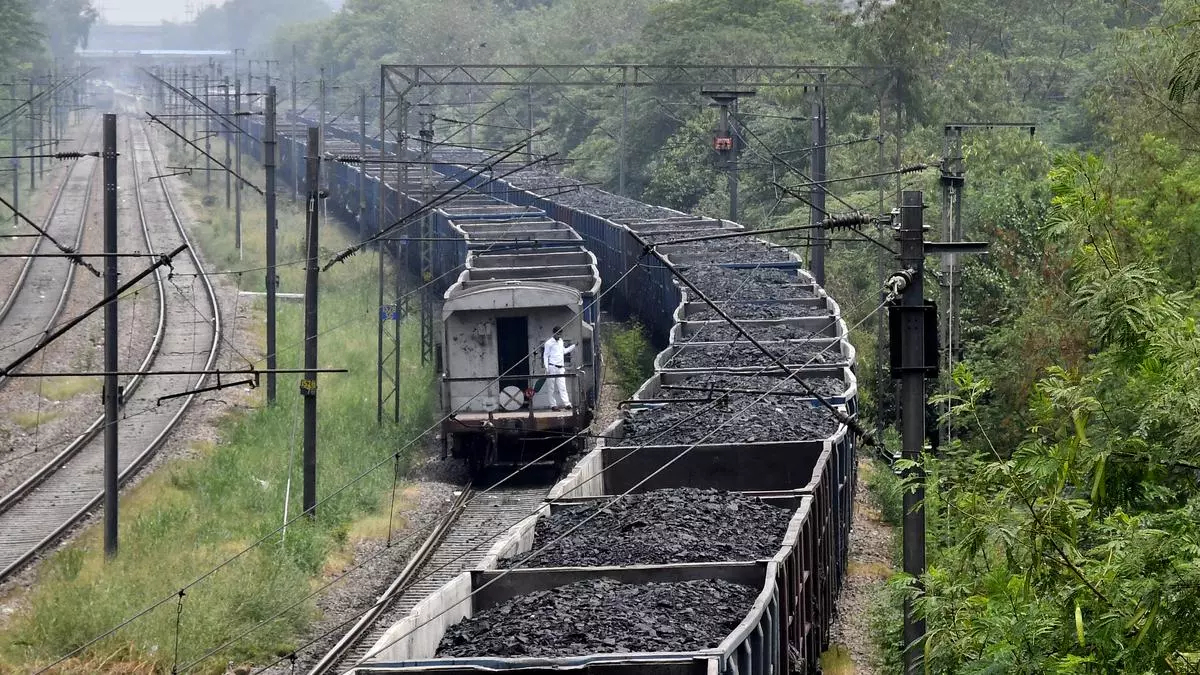Understanding India’s Coal Imports

- 29 Mar 2024
Why is it in the News?
In recent years, the combination of unpredictable weather patterns and rapid economic growth has resulted in significant spikes in electricity demand, posing a challenge to reliably meet the escalating requirements.
Background:
- India has grappled with the looming threat of electricity shortages in recent years, particularly exacerbated by rising temperatures amplifying the power demand.
- While discussions on this matter typically revolve around the deficit in domestic thermal coal and the need for imports, a more thorough investigation uncovers intricate challenges concerning logistics and regulatory interpretation.
- Therefore, it is imperative to delve into these dimensions, shedding light on the complexities of the situation and seeking solutions to tackle the root causes.
What are the Primary Causes of Domestic Thermal Coal Shortages?
- Transportation Infrastructure Deficiencies: A critical challenge lies in the inadequacy of transportation infrastructure, notably the railway network, which predominantly facilitates coal transportation across India.
- Despite substantial coal production, the limited capacity of railways often hampers timely delivery to power plants, contributing to delays and inefficiencies in the coal supply chain.
- Geographical Disparities: Complicating matters, the distribution of coal mines and power plants across diverse regions adds another layer of complexity to logistics.
- Power plants situated far from coal mines encounter heightened logistical hurdles, facing difficulties in securing a consistent coal supply due to increased transportation time and costs.
- Storage and Handling Limitations: Insufficient storage and handling infrastructure at both mines and power plants exacerbate challenges in managing demand and supply fluctuations.
- Inadequate storage capacity can lead to stockpiling issues, exacerbating delays and hindering efficient coal delivery.
Balancing Alternative Domestic Sources and Imports:
- Exploration of Alternative Domestic Sources: While alternative coal sources, like auctions organized by Coal India Ltd., present a viable domestic option, they often receive less attention compared to imports.
- These auctions enable power plants to procure coal domestically, albeit potentially at higher prices, yet remain overlooked in favor of imported coal.
- However, auctions offer a feasible alternative, particularly for plants not hindered by logistical constraints in accessing coal from auction sites.
- Narrow Focus on Imports: The discourse tends to prioritize imports as the default solution for coal shortages, neglecting the potential of domestic alternatives and failing to consider the broader implications of heavy reliance on imported coal.
- Cost Implications: Importing coal entails additional costs, including transportation, handling, and import duties, resulting in higher variable costs for coal-based electricity.
- These expenses are often transferred to consumers through elevated electricity tariffs, burdening both households and industries.
- Regulatory Interpretation: Misinterpretation of Ministry of Power advisories recommending coal imports as mandates further blur the distinction between alternative sources and imports.
- While these advisories may propose importing a certain percentage of coal, they should not be perceived as obligatory requirements but rather as guidelines to be tailored to each power plant's unique circumstances.
- Less Emphasis on Domestic Procurement Enhancement: The emphasis on imports sidelines opportunities to improve domestic coal procurement and distribution processes.
- Addressing logistical hurdles and streamlining administrative procedures could enhance the efficiency and reliability of India's domestic coal supply chain, potentially reducing the reliance on costly imports.
Regulatory Frameworks Influencing Responses to Electricity Shortages and Coal Procurement Strategies:
- Clarifying Advisory Interpretations: An ongoing challenge in regulatory considerations involves clarifying interpretations of advisories from government entities like the Ministry of Power.
- While these advisories may offer recommendations for addressing coal shortages, particularly through import suggestions, they should not be misconstrued as mandates.
- Misinterpretation can lead to unnecessary costs and burdens on consumers, as power plants may feel compelled to comply with import recommendations, disregarding potentially viable domestic alternatives.
- Forward-Thinking Regulatory Decision-Making: Regulatory bodies overseeing electricity generation and distribution must adopt a forward-thinking approach to decision-making.
- This entails comprehensive assessments of regulatory measures' implications on stakeholders, including consumers, power producers, and distribution utilities.
- Analysis should weigh the costs and benefits of various coal procurement strategies, encompassing factors like transportation costs, import duties, and environmental impacts.
- Customized Approaches for Diverse Plant Settings: Recognizing the varied challenges among power plants regarding coal shortages, regulatory bodies should tailor measures to each plant's specific circumstances.
- Pit-head plants, closer to coal mines, may have easier access to domestic coal and encounter fewer logistical constraints compared to plants situated farther away, necessitating heavier reliance on imports.
- Regulatory interventions should thus be nuanced and adaptable rather than uniformly applied.
- Balancing Cost-Efficiency and Reliability: Regulators face the critical task of balancing cost and reliability in electricity supply.
- While imports may offer prompt solutions to coal shortages, they incur substantial costs affecting consumers.
- Therefore, regulators must meticulously evaluate the potential cost savings of domestic procurement against the reliability and security of imported coal supply, ensuring transparency and equity in decision-making.
- Long-Term Planning and Sustainability Integration: Regulatory considerations should encompass long-term planning and sustainability objectives alongside immediate coal shortage mitigation.
- While addressing immediate needs is crucial, regulators must also contemplate the broader ramifications of coal procurement strategies on energy security, environmental sustainability, and renewable energy transition.
- This necessitates a forward-looking approach aligning short-term actions with long-term sustainability objectives, facilitating India's transition to a resilient and sustainable energy framework.
Conclusion
Addressing electricity shortages in India necessitates a nuanced approach that considers both logistical hurdles and regulatory complexities. While importing coal may offer a temporary solution, it does not tackle the fundamental logistics inefficiencies. India can better navigate the challenges of power generation by addressing root causes and implementing tailored solutions, ensuring a more effective response to evolving weather patterns and increasing demand for electricity
